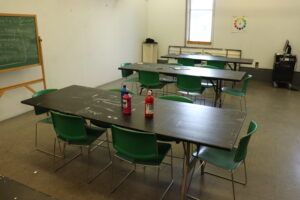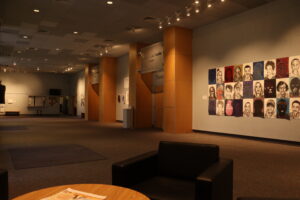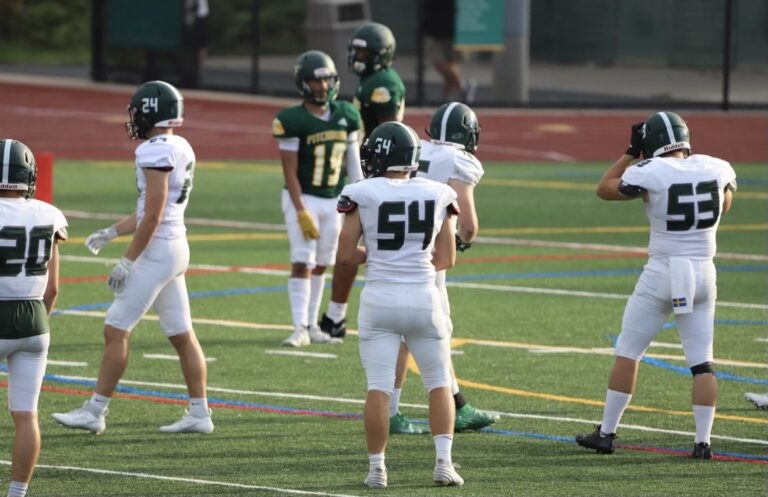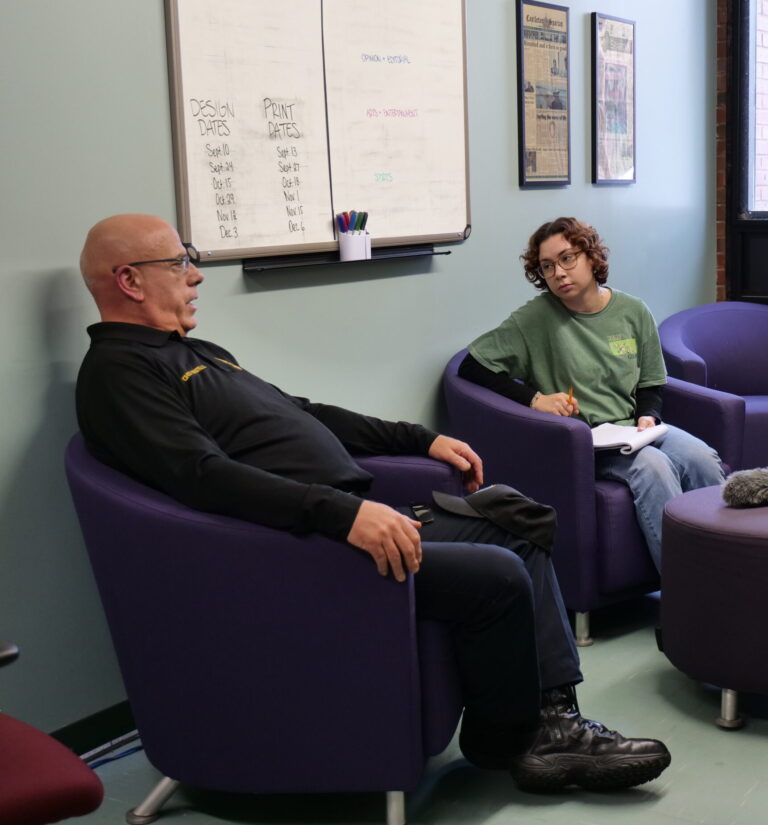The impact of 2.0
Students and faculty unhappy with proposed cuts to arts from optimization plan

On Tuesday, Oct. 3, Vermont State University Interim President Mike Smith sent out the draft of “Optimization 2.0,” a collection of “program array evaluation, consolidation, adjustment, and reduction,” awaited by all since a September announcement brought the topic to the forefront.
“What we are doing with these recommendations is confronting our pressure head on – not running from them,” said Smith, addressing the $22 million dollar deficit as of the 22-23 fiscal year, a lead factor in making the changes.
Entailed in the report are recommendations for ten programs to be discontinued, 13 consolidated with other programs, and 11 to change campus locations. A workgroup comprised of administrators, staff, and faculty, met over the summer and into the fall to determine said changes. Faculty and staff may offer feedback through Oct. 27, which will then be evaluated before final decisions are made by Oct. 31.
The report assures that no current students will be affected, and the programs impacted will be “taught out” over the next two years.
However, the changes are of immediate concern particularly to faculty, since the recommendations are predicted to reduce the number of full-time faculty by 20 to 33 positions, out of the current 207.
Currently, up to 33 buyouts are available, offering one half of the faculty’s current salary at the end of the 2023-2024 academic year. The cutoff date for faculty to apply is Oct. 27, and depending on the number of buyouts, several layoffs may take effect.
“There is a lot of painful uncertainty about our fate,” said William DeForest, associate professor of Graphic Design, a program proposed to move to the Lyndon campus.
He said that, if this change were to take effect, he could be laid off before the Fall ‘25 semester.
“They’ve simply pitted us against each other,” he added, discussing the integrative work teachers across campuses have done, such as with his Graphic Design colleague at Lyndon, to then only be evaluated against for employment.

Aside from concern for his position, DeForest said he is also concerned for the program proposal itself, naming dual majors not located on the Lyndon campus, saying he is “not certain they would take it online” and there’s uncertainty about how programs will be phased out for current students.
“The goal was to make all programs accessible to all everywhere, and this doesn’t seem to fit the model they proposed to us,” he said.
Phil Whitman, associate professor of Art, which is proposed to move to the Johnson campus, is also concerned.
“I do want students to be aware of the ramification of what this is saying. So far, we’ve tried to, in this transformation and consolidation into VTSU, it’s been all about accessibility. This proposal is actually the opposite of this. They’re restricting access,” he said.
Whitman says the removal of fine art on the Castleton campus will have major implications, even foreseeing “a net loss of art students program-wide.”
“One of the main arguments is for the Vermont Studio Center in Johnson, but we also have a big community involvement here,” listing close relationships with the Castleton Bank Gallery, Stone Valley Arts, and Chaffee Art Center, to name a few.
He also points out the interconnectedness of fine arts with other programs, most prevalently music, theater, and Soundings, and how in-person connection is vital to keep that alive.
But even outside of the department, art students are involved in countless other classes and co-curriculars, for instance art history majors that are also involved in the AAG program and Granger House, which is solidly remaining on the Castleton campus, he said.
Kailey Abbott-Bishop, a double Business and Technical Theater major, adds, “Here, you can be an art student and anyone else at the same time. I have two majors and a minor. They make it so you’re able to be multifaceted, and as an art student that is what you need.”
She said that, should these changes take effect, “this community would be ripped apart from us.”
Sherill Blodget, chair of Chorale Activities and music professor, discussed proposals to discontinue the music B.A. program and the Performance, Arts and Technology program.
“I think we’re willing to cut the Performance, Arts, and Technology,” she said, noting recent low enrollment. However, she is concerned about the discontinuation of the B.A. in music, arguing that it “would save no money because the core curriculum for the Music BA is the core curriculum for Music Education (B.M.)”
“There are many core classes for the music B.A. that are electives for the B.M., which could not be offered if the B.A. was discontinued, since there would be such a low enrollment,” she said.
Her main arguments, outlined in an official response on behalf of the department, include that it would save no money, endanger the Music Ed. Program, and tear apart the music culture at Castleton.
Additionally, “the caliber and quality of our ensembles would diminish,” which is also open to non-majors. “Imagine if you’re a non-major and you want to sing, and it’s a really subpar, small ensemble. You’re probably not going to join it.”
In reference to how Optimization 2.0 was handled, Blodget raised concerned about the timing, including the announcement being sent out over break, the faculty pressure to defend huge decisions in two weeks, and the period between Oct. 27 and Oct. 31 being too short a period to evaluate responses.
Megan Blossom-Prentice, chair of Psychology, maintains that the VTSU administrative budget should have been evaluated first.
Although she and many others respect the need to become financially sustainable, she says there is a “real imbalance in who is bearing the brunt of these cuts,” and “It’s hard to understand how they could justify the number of layoffs that seem to be implied by the number of buyouts.”
She is also concerned with the potential discontinuation of the School Psychology Specialist Ed. Program, saying there is a huge need in the state, and that years of low enrollment are due to inadequate institutional support.
However, she says that they “have some reason to be hopeful” for the program, since Smith recently made an announcement on VPR that he will “take a second look.”
Maddi Ashe, a Fine Arts major and student ambassador, isn’t happy with the proposed cuts.
“The selling point of Vermont State University has been that you’re able to choose what campus you want to live on. This is proving otherwise. The communication isn’t great, and they’re contradicting themselves,” she said.
She feels that the changes are striving for equality between campuses when it should be focused on equity.
Hunter Day, a sophomore history major, is concerned that cutting academic programs will have a domino effect.
“It’s like a tower. If you take from the top, it’ll stay stable, but if you take from the bottom the whole thing will crumble,” he said.








